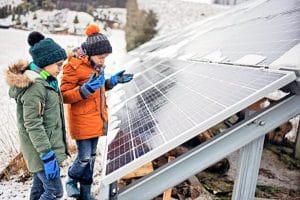The NT Government has been quiet in recent months regarding fulfilling its commitment to the Territory achieving 50% renewable energy by 2030. That’s just changed.
Yesterday the Government announced an Expert Panel is working on delivering a Roadmap to Renewables Report, a follow-on from the initial plan of the same name released in August.
“The Territory has one of the most spectacular natural environments in the world and it is important we do our part to act on climate change,” said NT Chief Minister Michael Gunner.
“Smart communities realise that investing in renewable energy is good for the environment and great for jobs. It’s also the long term key to cheaper and more secure energy supply for all Territorians.”
The Panel, which held its first meeting this week, is chaired by Alan Langworthy. Mr. Langworthy’s prior work has significantly impacted the development of renewable energy use in remote areas to substitute diesel fuel powered generation. He was the recipient of a Clunies Ross Medal in 2009 for his work and was also on the Honour Roll for Senior Australian of the Year 2010.
The Roadmap To Renewables Report will review and update advice from the first two Green Energy Taskforce reports and provide advice on technology, regulatory and financial challenges and options. It will also look at ways low income, remote and renting households can join such a transition and provide guidance with regard to attracting investment and generating jobs.
Part of the report’s preparations will be informed through consultation with Territorians.
$700,000 in funding has been earmarked this financial year to deliver the Roadmap to Renewables Report.
The NT government-owned Power and Water Corporation will have a significant role to play in the 50% renewables by 2030 transition as the company is responsible for electricity transmission and distribution across the Northern Territory.
Power and Water is already gradually integrating more solar capacity across remote communities to reduce its reliance on diesel, but says it is also examining other renewable sources such as tidal, bio-fuels, wind and solar thermal; along with complementary technologies including energy storage.
Currently, solar power is the most widely used form of renewable energy in the Northern Territory.
Image credit: NT Labor







































